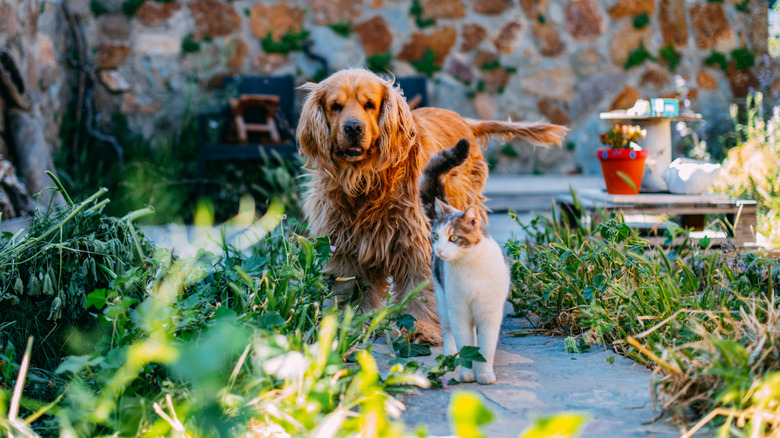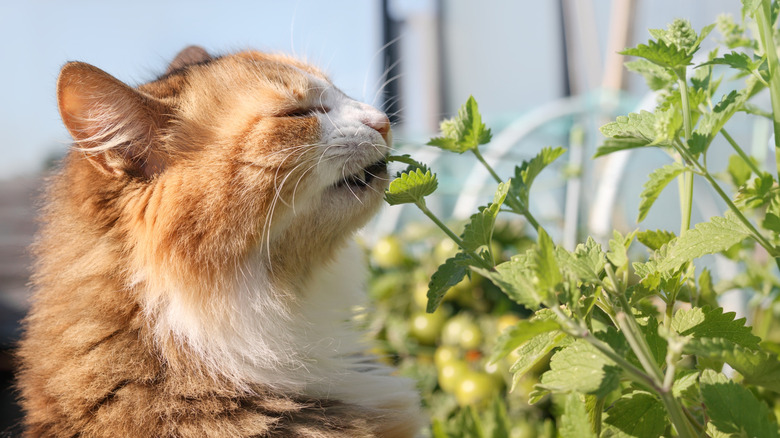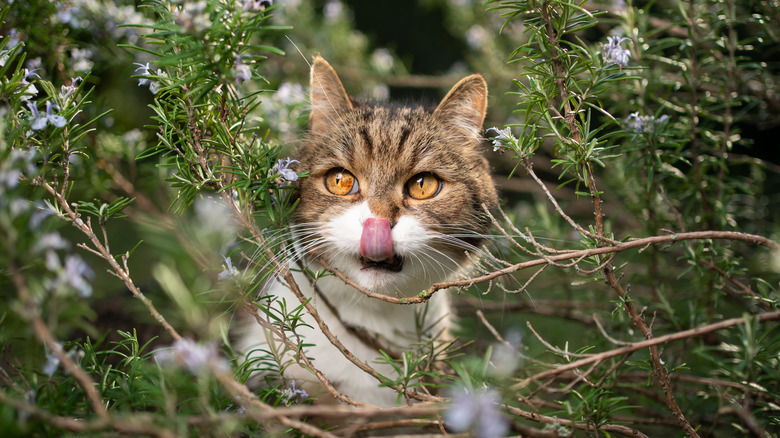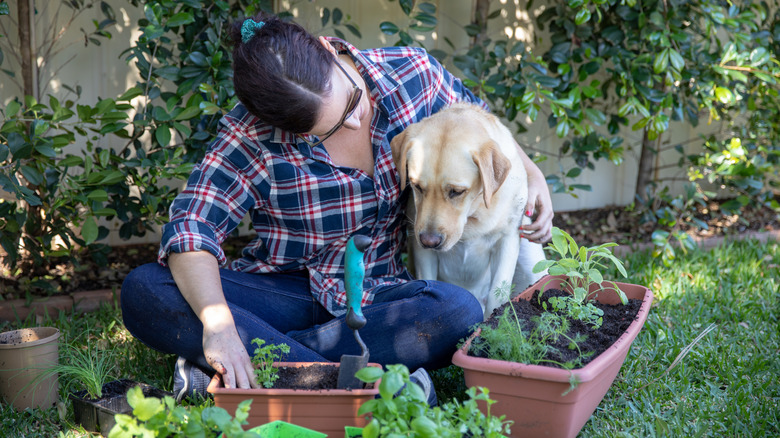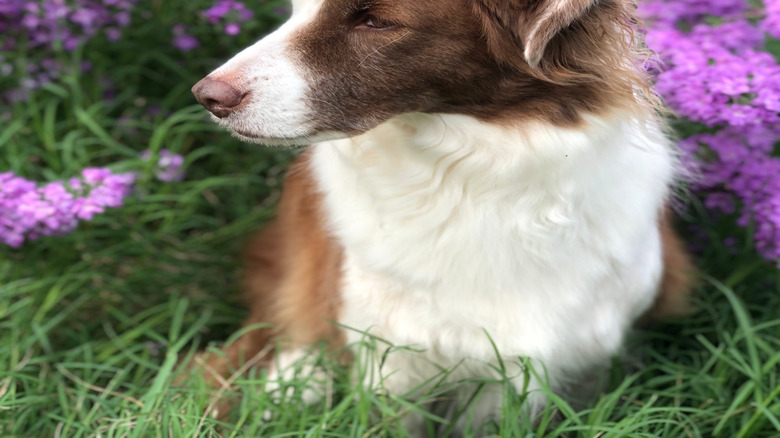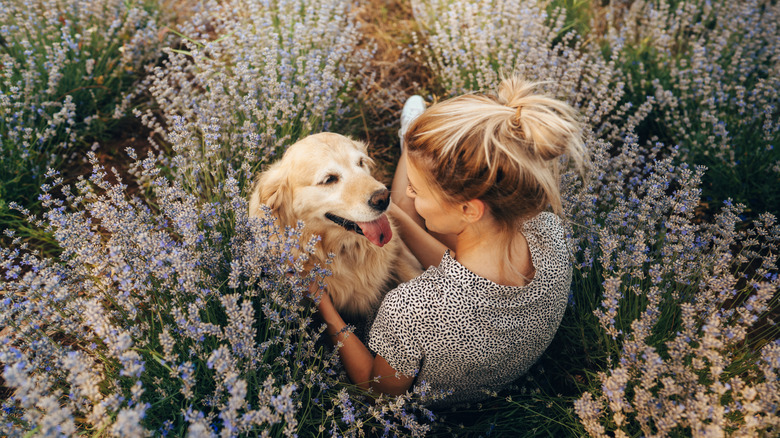These Yard Plants Can Help Repel Fleas From Your Pets
We may receive a commission on purchases made from links.
Fleas are a pest found all over the United States, with over 300 varieties — however, not every species bites our pets. While being bitten by a flea can cause skin irritation and itchiness, the significant illnesses they can carry — like Lyme disease or cat scratch fever — should be a cause for concern to pet parents. Vets may recommend flea and tick medication to address the potential health risks, but any form of pest prevention can help put the mind at ease.
Thankfully, your garden is great for repelling fleas with pet-friendly plants you can grow — from the kitty treat catnip to the chef-favorite rosemary. These herbs and flowers not only look nice, but can act as natural flea repellents too. While these plants aren't toxic to pets, it's always best to keep your furry friend from ingesting them to avoid any potential reactions. Luckily, finding that balance between a happy pet and a beautiful garden can be achieved.
Catnip
Catnip — a cat's best friend. Your little kitty will love you for growing this plant in your garden. Catnip is considered easy to grow. As an herbaceous perennial, it dies in the winter but will grow back in the spring from its roots. Not only will it keep the fleas away, but the plant is infamous for getting cats excited. Besides being a potential cat treat and a flea repellent, catnip is the perfect addition to a tea garden for humans, too.
Catnip's kitty-attractive attributes come from the nepetalactone it secretes to protect itself from pests like fleas. Around two-thirds of cats will have a reaction, often characterized as a burst of excitement followed by a comfy burnout. Pet parents should watch out for warning signs that a cat has enjoyed too much catnip. Ingesting too much catnip can cause adverse reactions such as vomiting or diarrhea. For homes with dogs, catnip is non-toxic, but consuming too much of the plant can lead to stomach and digestive issues.
Rosemary
The smell of rosemary cooking can be divine for the happy chef. The scent comes from the oil it produces, which consists of several elements, including camphor. Camphor has been known to act as a natural pest repellent and is considered non-toxic to cats and dogs. Plant-based pet shampoos, like Vet's Best Flea and Tick Advanced Strength Dog Shampoo, contain rosemary oil as a key ingredient. Be aware that mass consumption of the plant's concentrated oils could cause issues, and high dosages of camphor, such as in essential oils or pain-relief body rubs, can be toxic.
Rosemary is a challenging herb to grow, as the mini-tree-like plant takes time to cultivate and will seldom be ready to harvest in its first year. Beyond being a natural flea repellent, the scent of rosemary is also known to help ease anxiety and improve concentration. This calming aspect can provide an additional boost for pets that experience anxiety.
Thyme
Thyme is an essential herb in many kitchens and also a great flea-repellent. Thyme oil contains thymol, a natural repellent of various pests, including fleas. Thyme is non-toxic to both cats and dogs. It has also been shown to benefit cats, and may help to kill intestinal worms, improve digestive health, and act as a preventative in fungal growth.
For dogs, thyme may also improve digestive health and remedy gingivitis. It's commonly used in some homemade flea-repelling remedies to help deter fleas naturally, alongside other pet-safe herbs.
However, pet parents should be aware that Spanish Thyme, an entirely separate plant, is toxic to felines and canines and should be avoided in gardens. Thyme can be finicky and needs proper pruning to grow healthy in a garden. Despite this, it is considered simple to grow and can look aesthetically pleasing with other plants while helping to repel fleas.
Sage
Indigenous communities across North America have long cherished sage for its cleansing powers, and it has become a staple culinary herb across many countries. Sage is a known pest repellent, including repelling fleas, and is perfect for covering a broad swathe of the garden. It has the added bonus of keeping your other garden plants safe from well-known pests such as the cabbage moth, too. Sage is relatively easy to grow, but spreading fully throughout a garden can take some time. Most sage is propagated from cuttings, rather than grown from seed. However, if you don't have anyone with their own flea-repelling garden, the plant can be started from seed indoors.
The herb contains linalyl acetate and linalool — chemicals common to all plants in the mint family. Sage is non-toxic to cats and dogs. When adding sage to a garden, you should avoid the similar-looking yellow and red sage also known as verbena, as that is toxic to dogs.
Lavender
Lavender has a strong, distinct smell cherished by many. The fragrant purple flower contains compounds like linalool and linalyl acetate that can deter fleas from your garden. Lavender is also known for its calming attributes, but pet parents should be cautious of too much or direct exposure to essential oils, which can harm dogs and cats.
Lavender oil has been utilized as an alternative by some dog owners as a natural flea repellent, using a few dabs on their collar or bandanna while on walks to deter pests. Given lots of full sun a day and proper watering, lavender is a resilient plant that is easy to grow. While lavender is safe to grow in your garden, there are caveats that a pet parent needs to look out for. If eaten in large quantities, the flower can be toxic to cats and dogs due to the same compounds that repel fleas.
